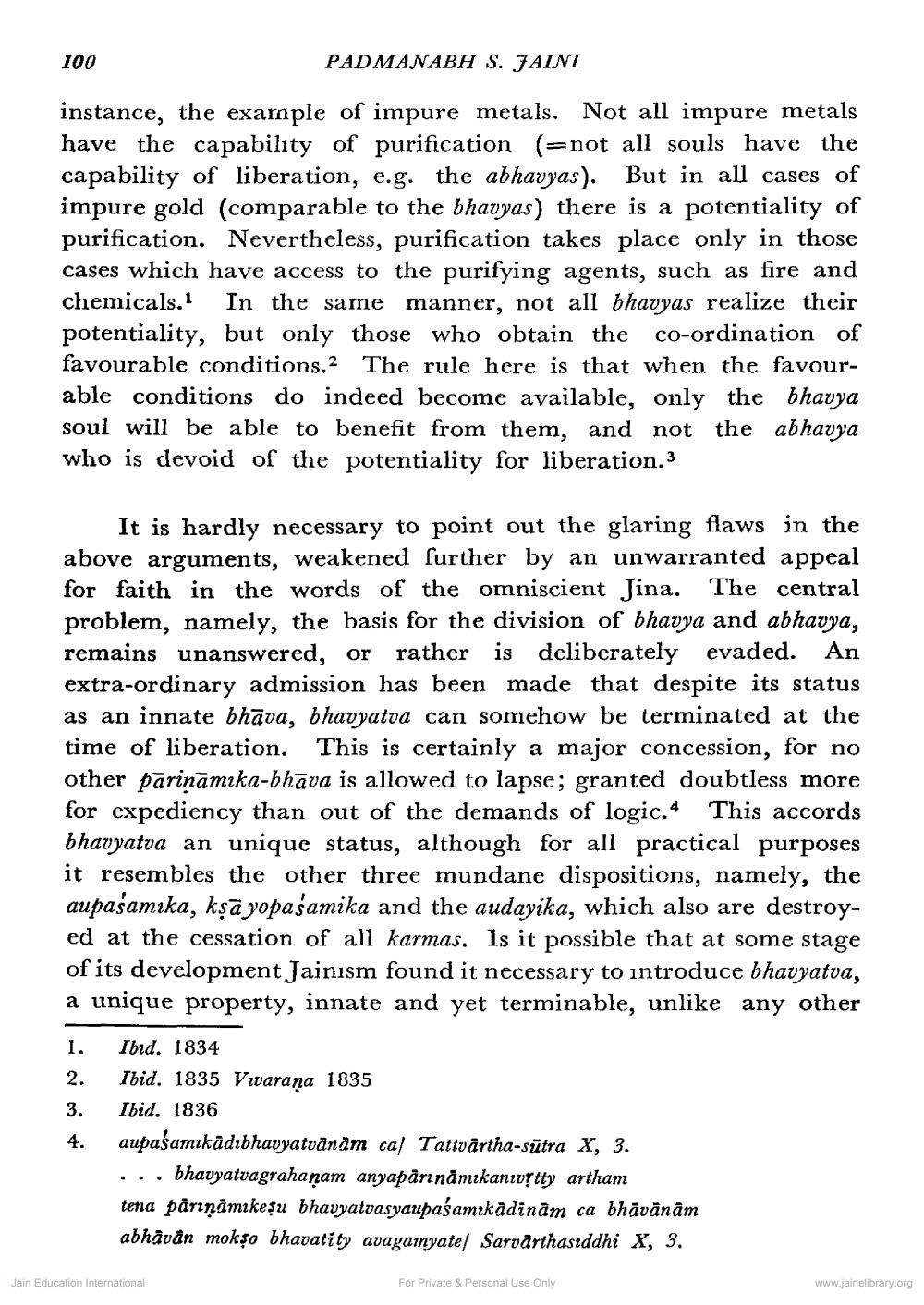________________
PADMANABH S. JAINI
instance, the example of impure metals. Not all impure metals have the capability of purification (=not all souls have the capability of liberation, e.g. the abhavyas). But in all cases of impure gold (comparable to the bhavyas) there is a potentiality of purification. Nevertheless, purification takes place only in those cases which have access to the purifying agents, such as fire and chemicals.1 In the same manner, not all bhavyas realize their potentiality, but only those who obtain the co-ordination of favourable conditions.2 The rule here is that when the favourable conditions do indeed become available, only the bhavya soul will be able to benefit from them, and not the abhavya who is devoid of the potentiality for liberation.3
100
It is hardly necessary to point out the glaring flaws in the above arguments, weakened further by an unwarranted appeal for faith in the words of the omniscient Jina. The central problem, namely, the basis for the division of bhavya and abhavya, remains unanswered, or rather is deliberately evaded. An extra-ordinary admission has been made that despite its status as an innate bhava, bhavyatva can somehow be terminated at the time of liberation. This is certainly a major concession, for no other pārināmika-bhāva is allowed to lapse; granted doubtless more for expediency than out of the demands of logic. This accords bhavyatva an unique status, although for all practical purposes it resembles the other three mundane dispositions, namely, the aupaśamika, kṣā yopaśamika and the audayika, which also are destroyed at the cessation of all karmas. Is it possible that at some stage of its development Jainism found it necessary to introduce bhavyatva, a unique property, innate and yet terminable, unlike any other
1. Ibid. 1834
2.
3.
4.
Ibid. 1835 Vivarana 1835
Ibid. 1836
aupaśamıkadıbhavyatvānam cal Tattvartha-sutra X, 3.
bhavyatvagrahanam anyapārināmikanıṛtty artham
tena pāriņāmıkeşu bhavyatvasyaupaśamıkādinām ca bhāvānām abhavan mokṣo bhavatity avagamyate] Sarvarthasiddhi X, 3.
Jain Education International
For Private & Personal Use Only
www.jainelibrary.org




